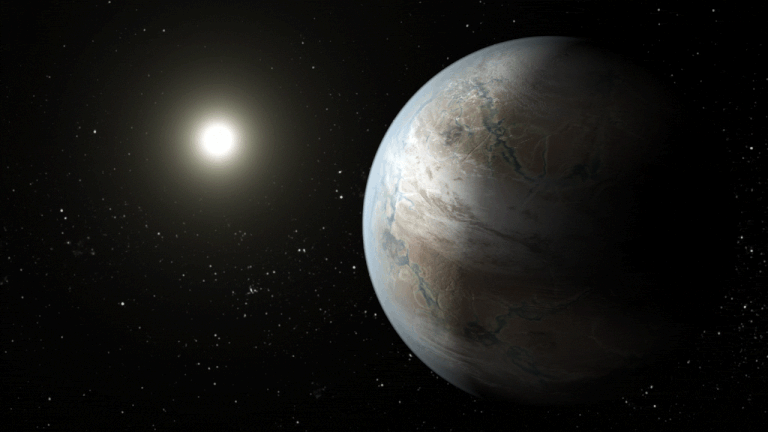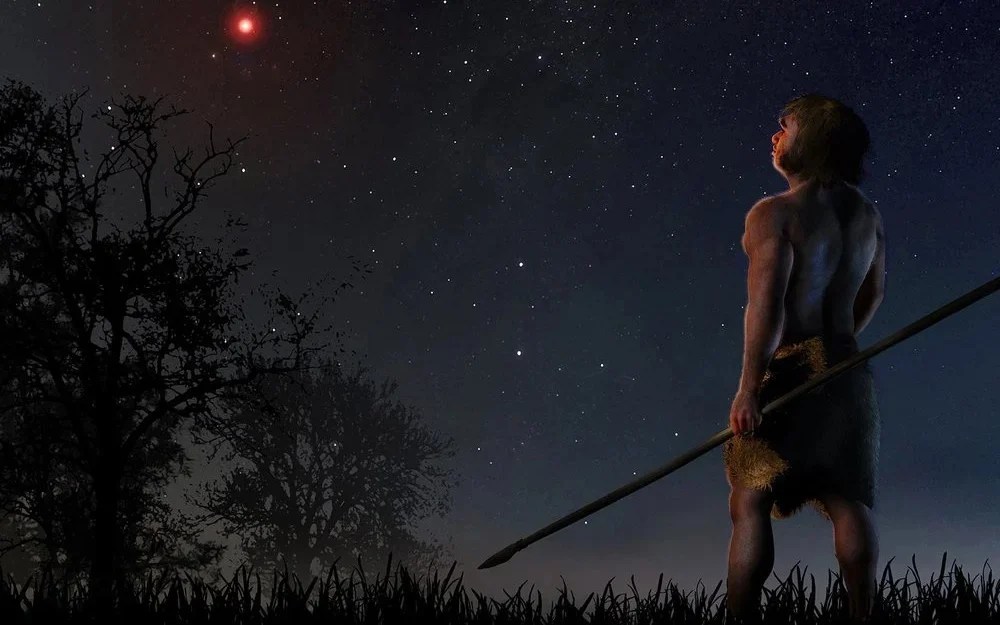Ask Ethan: Did all life begin from a single, ancient cell?
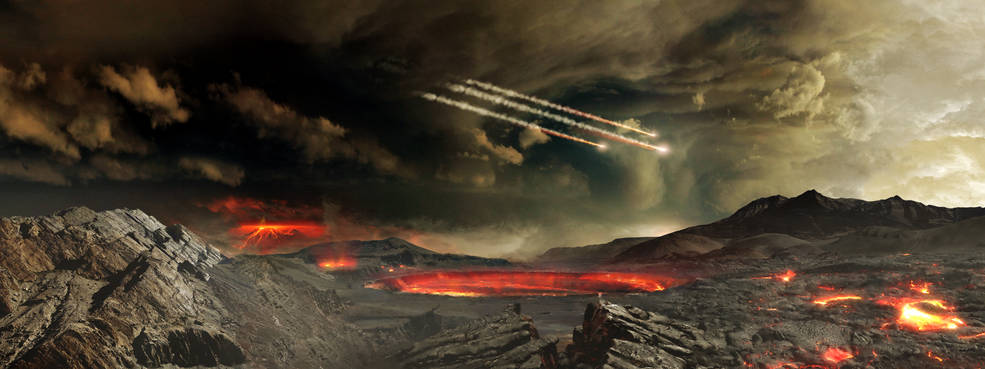
- Today, there’s a tremendous diversity of life on Earth, from relatively simple single-celled organisms to complex, differentiated, and enormous species made out of trillions of cells each.
- But at the core of it all is the cell. All life forms, with the arguable exception of viruses, come from the same cellular-based universal common ancestor dating back billions of years.
- But was the very first life on Earth a single cell, and did all life arise from that? Or is there a different scenario? Here’s the surprising science you may not have heard.
When we look out at all the various forms of life that exist on planet Earth today, from the simplest bacteria to the largest, most complex and differentiated plants, animals, and fungi, we find that everything contains the same basic building block: the cell. As we go through the fossil record and reconstruct the history of life on Earth, going farther and farther back, we find that while early life was simpler, it was not only all cellular in nature, but that all life can be genetically traced back to what biologists call LUCA: the Last Universal Common Ancestor. Going back billions of years — as far as natural history can take us — all extant life on Earth appears to have originated from the same ancient source.
But does that imply that the very first life on Earth was a single cell, and that all life came from that? It’s a fascinating possibility, and the subject of this week’s Ask Ethan question, which comes from Bucky Wood, who asks:
“Do we agree that the first life was a single cell, and every living thing on Earth has evolved from the first living single cell?”
What once seemed the most likely explanation back in the early-to-mid-20th century now seems extraordinarily unlikely. Here’s what we know today.

At present, there are at least several billions of living species on Earth, all of which have a few things in common.
- They all collect resources of some type or another from their environment.
- They all have a metabolism, where energy is extracted to achieve the organism’s metabolic goals.
- They all reproduce, making offspring that are wholly or partially identical to the parent organism.
- They all have some sort of cell wall or cell membrane, which separates the organism itself from the external environment.
- And they all have, within them, some sort of genetic code, where the information that allows for proteins to be synthesized and other life processes to occur exists.
The simplest forms of known life have well under a million base pairs in their genomes, while the most complex plants and animals have over 100 billion base pairs in theirs. And yet, quite remarkably, when we examine the genomes of all the different types of life forms that exist on our planet, we find that they have tremendous commonalities, despite their often obvious differences. When we reconstruct the genetic tree of life, in fact, we find that every organism we know of — all the types of bacteria, all the archaea, all the protists, fungi, plants, and animals — appear to be genetic cousins of one another. At some point in the distant past, we all shared a common set of ancestors.
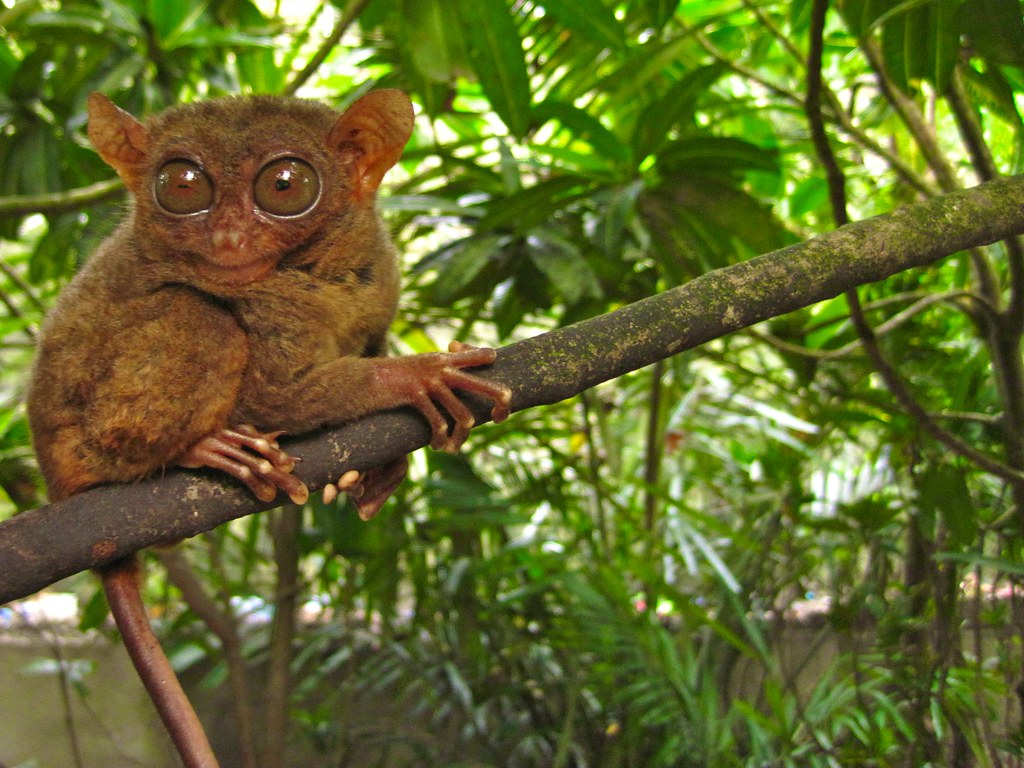
This was put to the test in 2010, when a landmark paper integrated the evidence across the entirety of life on the planet with modern phylogenetics and rigorous probability theory. Previously unchallenged assumptions, such as the notion that similarity in between genetic sequences necessarily implies genetic kinship, were thrown out in favor of assumption-neutral tests. And universal common ancestry was only considered alongside a number of alternative hypotheses, including horizontal gene transfer between separate phyla (or even kingdoms/domains) and symbiotic fusion events.
The results of conducting the formal test were as follows:
- Overwhelmingly, the idea that all extant life shares a universal common ancestor is favored, and all alternative hypotheses are disfavored.
- Horizontal gene transfer absolutely does occur, but is extremely unlikely to occur between organisms that had descended from separate incidents of cell formation, as their genes would be converted into non-coding segments.
- The fact that the same 22 amino acids, and those 22 only (out of more than 80 known to naturally occur) are found in biologically produced protein molecules is additional strong chemical evidence in favor of universal common ancestry.
However, even with this extremely strong evidence, there’s a limit to what we can conclude about common ancestry and the origin of life.
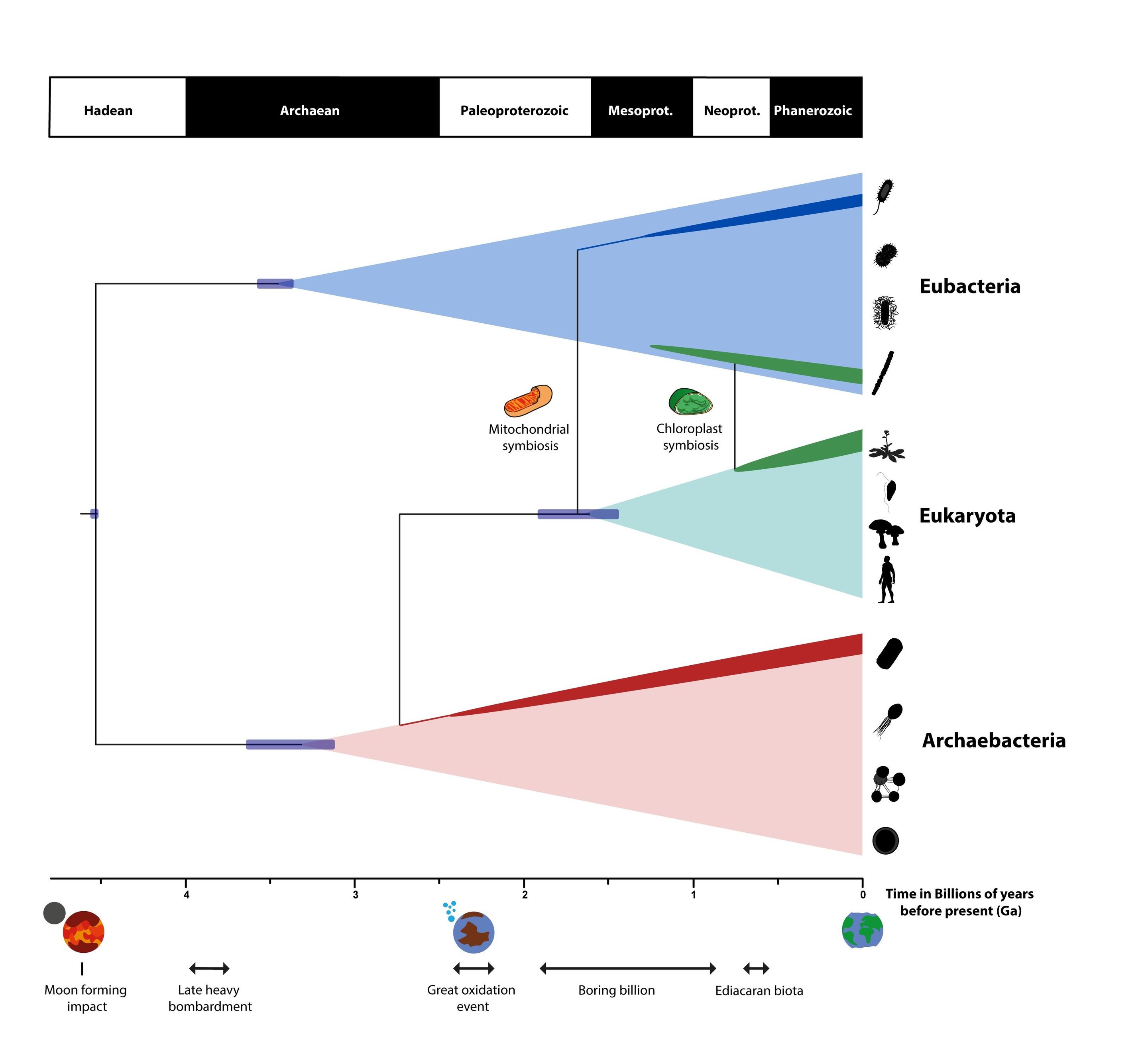
First off, there’s no reason to believe that whatever organism we identify as our last universal common ancestor was either the first life form on Earth or was ever alone on this planet. Instead, we can only conclude that it’s the only one whose descendants survived into the Mesoarchaean era: an era that only began 3.2 billion years ago. (The fossil record, for what it’s worth, is very sketchy beyond 2.5 billion years ago.)
Second, we can robustly conclude that life existed on Earth well prior to that epoch. There is substantial evidence that life came about no later than 3.8 billion years ago on Earth, and circumstantial evidence — based on carbon inclusions found in some of the oldest rock formations on the planet — that life may have emerged between 4.2 and 4.5 billion years ago: as early as coincident with the formation of the Moon.
And finally, whatever the last universal common ancestor was, it was certainly far more evolved and developed than whatever we might classify as the first life form on Earth. In addition, our current definition of life, perhaps stupidly, does not include viruses, which can have as few as tens of thousands of base pairs in their genetic code. But something that survives, undergoes metabolic activity, and reproduces, even if it’s only in a parasitic fashion with a host cell, even if they were famously described by Nobel Laureate Peter Medawar as “simply a piece of bad news wrapped up in protein,” can be considered alive by many definitions.
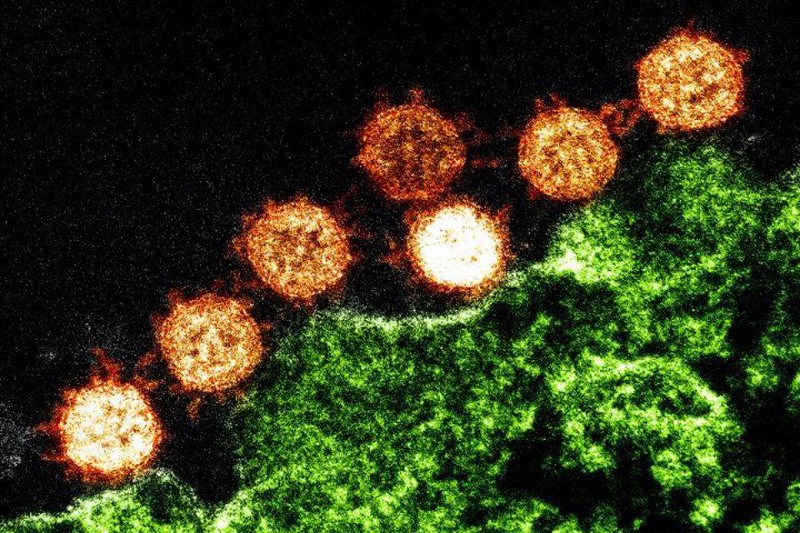
It’s also important, before we go any further, to make two disclaimers about what we’re going to say from here on out.
- There is no universally agreed-upon definition as to what life is. The definition we’re going to use, as we consider life’s origins and cellular nature, is that a living organism is anything that acquires resources, undergoes some sort of metabolic activity, and can produce copies of itself that share genetic commonalities.
- We have not actually uncovered the origin of life from non-life, either in Earth’s history, in the lab, or in any other fashion. We’re going to assume that life did arise, naturally, from non-life, and that it did so here on our planet after the planet’s formation. (Although it has been considered that terrestrial life may have originated prior to Earth itself.)
With that said, the most sensible place to start, considering we’ve already gone back as far as the information we have about biological history will allow us to go, is to the early Earth itself. By considering the environment in which Earth formed, and then what the conditions on our planet were way back in the Hadean era some 4.5 billion years ago, we can at least consider the problem from as scientific a perspective as possible.

When stellar systems form, they arise from a cloud of molecular gas that collapses. Inside that gas cloud are a wide variety of elements, and while each stellar system is unique, we can accurately reconstruct what the properties were of the gas cloud that gave rise to our own Solar System. Most of the elements are hydrogen and helium that are left over from the Big Bang, representing about 95% of the atoms by mass: ~70% hydrogen and ~25% helium. A small percentage of the elements, perhaps 3-4%, is helium that was made in stars from hydrogen, and an even smaller percentage, 1-2% are all of the heavier elements combined.
While the central star that formed in our system was mostly hydrogen and helium, the remaining matter formed a protoplanetary disk. While four (or more) giant planets formed, each with their own circumplanetary system, they all wound up substantially far from the Sun. Of the other bodies, none were massive enough to hang onto the lightest elements, so their cores are primarily composed of rock and metal. Only toward the end of planet formation, when the more primitive material that would make up the mantles and crusts of the rocky planets accumulated upon them (largely made of similar material to asteroids and comets), did things like planetary surfaces, oceans, and atmospheres begin to form.
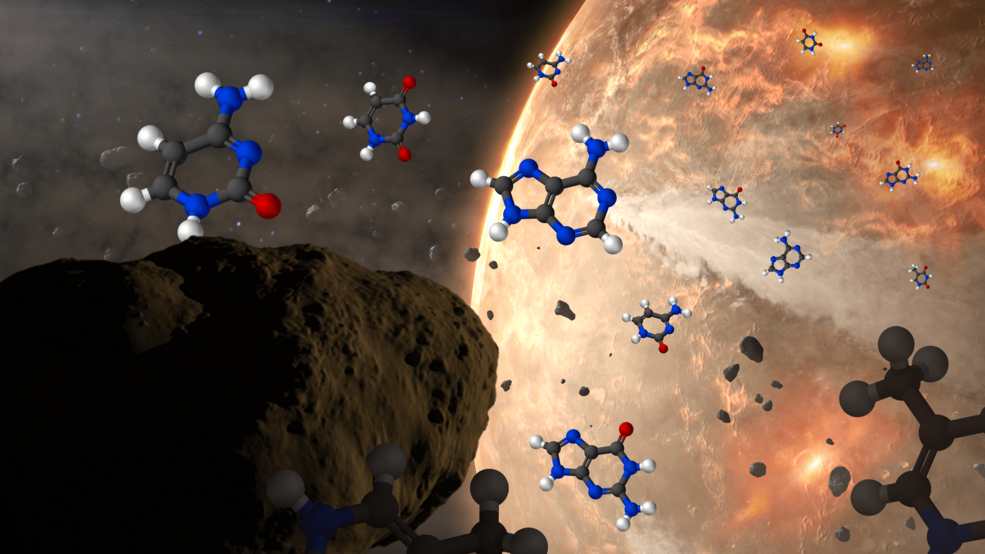
What, then, did the surface of early Earth look like? The best proxy for that is to simply look at the composition of the asteroids and comets we find in space, as well as the remnants of meteorites that have survived their journey down to Earth. When we look inside these primitive objects, many of which we can use atomic technique to date back to ~4.56 billion years ago, we find:
- there are over 80 unique amino acids inside,
- many of them are both left-handed and right-handed, even though all the ones that participate in life processes on Earth are exclusively left-handed,
- carbon-based organic molecules are also present, from the simple (like sugars) to the intermediate (like hexamethylenetetramine) to the complex (like polycyclic aromatic hydrocarbons),
- and, quite recently, we’ve discovered that all five of the nucleic acids that encode genetic information on Earth are present in meteorites as well.
While there are some who claim that these ingredients, if you smash them all together in a primordial soup (i.e., an aqueous environment with an energy gradient), may have given rise to self-replicating life spontaneously, that’s by far a minority opinion. Instead, a vastly preferred pathway by almost all working biologists is the idea that the ability to metabolize, well, something, is what came first.
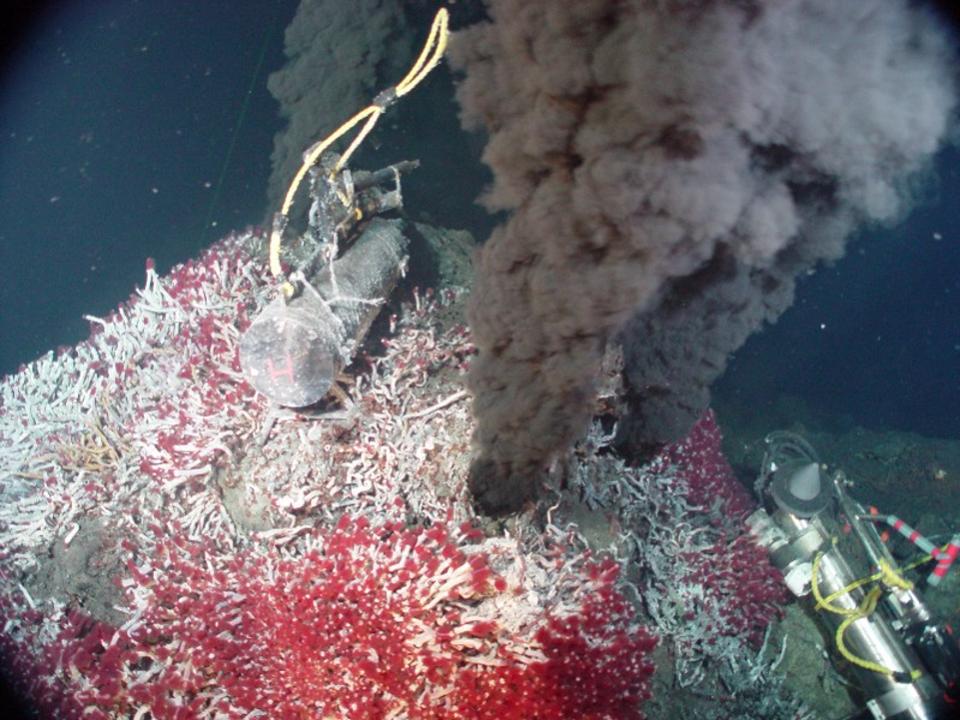
So let’s imagine what this might have looked like. You do have plenty of naturally aqueous environments, either the salty oceans and tidepools or freshwater sources like lakes and rivers. You have external energy in the form of sunlight and geothermal heat, including in deep sea vents and in hydrothermal fields. You have minerals and ions dissolved in that water, as well as all sorts of molecules, including a wide variety of amino acids that can bind together. And, perhaps most importantly from a thermodynamic perspective, you have chemical non-equilibrium states at a wide variety of interfaces: solid earth/liquid water, liquid water/volcanic magma, and liquid water/atmospheric gas.
As amino acids smack into each other, they spontaneously form and break bonds. As ions come along and bind to these primitive peptides, they can create enzymes. These molecules are fragile and easy to destroy or denature, but they’re also very large in number and the possibilities — set by the so-large-it’s-barely-fathomable mathematics of combinatorics — boggle the mind. Some of the proteins that form, merely by chance, will gain the ability to perform specific functions. These might have included:
- hoarding resources, including specific peptides,
- splitting/recombining other molecules and liberating usable energy in the process,
- and the ability to “bite” other useful molecules, while remaining intact themselves.
Whatever the case, the spontaneous creation of these metabolic peptides are all but inevitable. What comes next, fascinatingly, is a brand new but startling area of research.

It has recently been shown that if you have nucleobases in an aqueous environment — things like RNA, DNA, or even PNA (peptide nucleic acids) — that these nucleotides will line up along the various amino acids in a peptide chain. If they can pair up with their conjugate base, or “peel off” and draw additional amino acids onto them, they can effectively reproduce, to a high degree of accuracy, the original peptide chain.
This scenario, known as RNA-peptide coevolution, is how most working scientists investigating the origin of life now believe that self-replication, built on the backbone of metabolic processes, first came about.
Although I doubt that every biologist would agree that a free-floating molecule that can metabolize resources and replicate itself rises to the threshold of being “life” rather than “non-life,” this likely represents the first concrete steps that led from simple chemical processes to biological ones. These primitive metabolizing replicators likely existed with a great diversity among them, and many — if not most — certainly went extinct along the way. This predates a universal common ancestor, and even our notion of a cell, by many hundreds of millions (and maybe over a billion) years. Nonetheless, this is where current scientific thought takes us as to how life first originated on Earth.

The biggest problem with attempting to answer any questions about how life first arose on Earth, however, is the same problem we have when trying to reconstruct any sort of natural or even human history: the only clues that we have are based in what sort of evidence survives to the present day. All extant life on Earth descended from a common ancestor, but that only tells us about the life we see today. All extant life on Earth is cellular-based, but that only tells us what remains today, and even at that, only if we exclude viruses.
When it comes to the question of what the “first life on Earth” was, we’ll have to first come to an agreement as to what defines “life” before we agree on an answer. If you define life as “something that needs to be cellular-based,” then you’ll conclude that there was no life until the first cell evolved. But it’s overwhelmingly likely that something simpler and more primitive, that had a metabolism and could self-reproduce, preceded the cell by some time. The only thing we can be absolutely certain of, however, is that all the life that exists today can be traced back to a common ancestor a little over 3 billion years ago. Beyond that? There’s still more science to be done.
Send in your Ask Ethan questions to startswithabang at gmail dot com!

